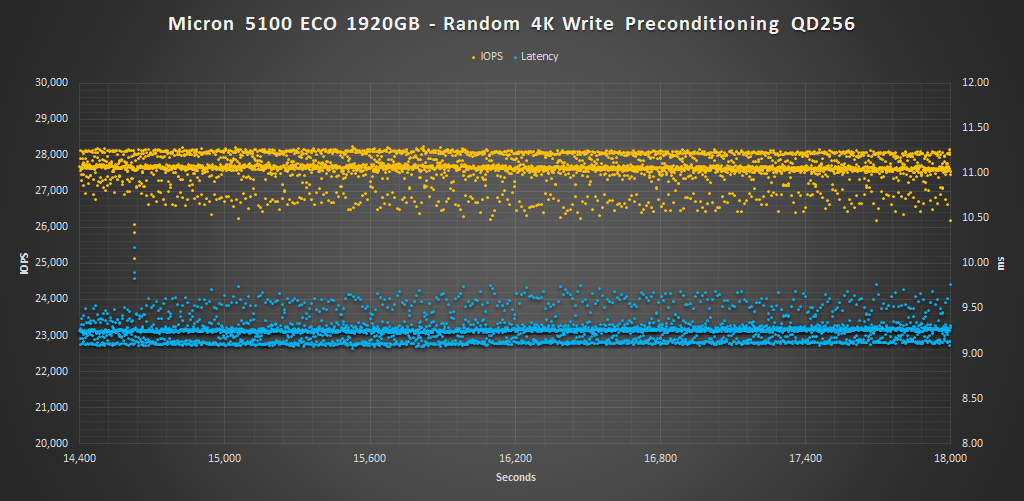4KB RANDOM READ/WRITE
In order to properly test random 4KB performance, we first secure erase to get it in a clean state. Next, the drive is filled by sequentially writing to the RAW NAND capacity twice. We then precondition the drive with 4KB random writes at QD256 until the drive is in a steady state. Finally, we cycle through QD1-256 for 5 minutes each for writes and then reads. All this is scripted to run with no breaks in between. The last hour of preconditioning, the average IOPS, and average latency for each QD is graphed below.
Taking a look at our preconditioning data we can see that the average 4K write IOPS are in line with the product specifications. The ECO model easily delivered over 24K IOPS, with performance averaging closer to 27.5K -28K. The 5100 MAX averaged near 78K, which just as the 5100 ECO, easily surpasses the rated spec.
During 4K reads the 5100 ECO and 5100 MAX both deliver better performance than the M510DC, but we can see that the Samsung and Toshiba SSDs have the advantage here.
The Micron 5100 MAX absolutely destroys the competition in 4K write performance. By QD4 it is already over 70K IOPS and latency stays below 0.5ms, even at QD32. The only drive that can even come close is the HK4E, which is only at 40K by then. The Micron 5100 ECO puts up a solid performance in its own regard. It is nearly tied with the Samsung PM863, expect during QD1, which the Samsung has the advantage.
 The SSD Review The Worlds Dedicated SSD Education and Review Resource |
The SSD Review The Worlds Dedicated SSD Education and Review Resource | 

